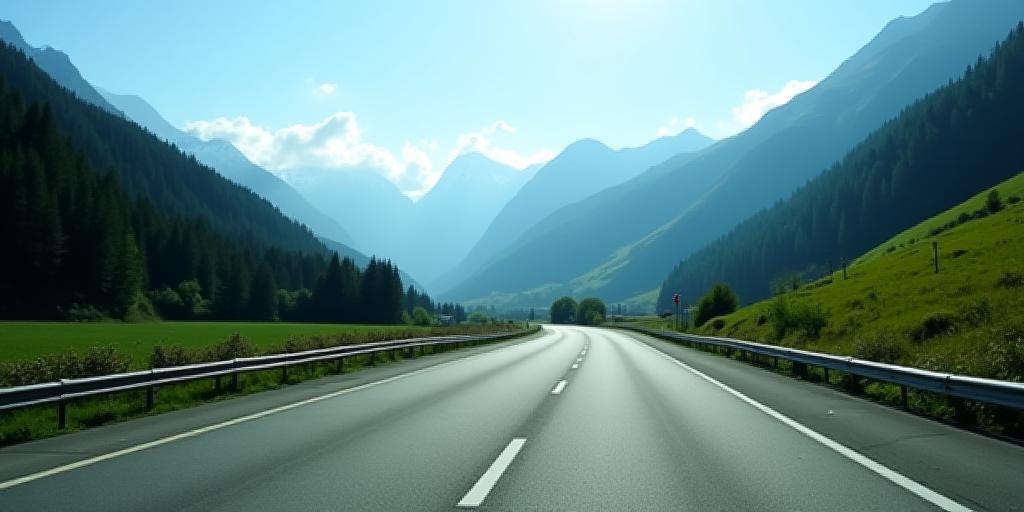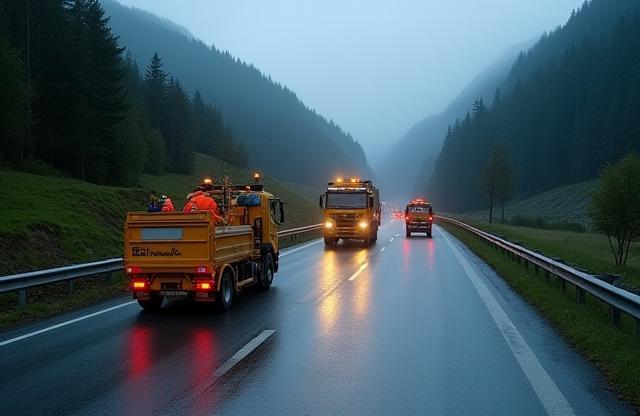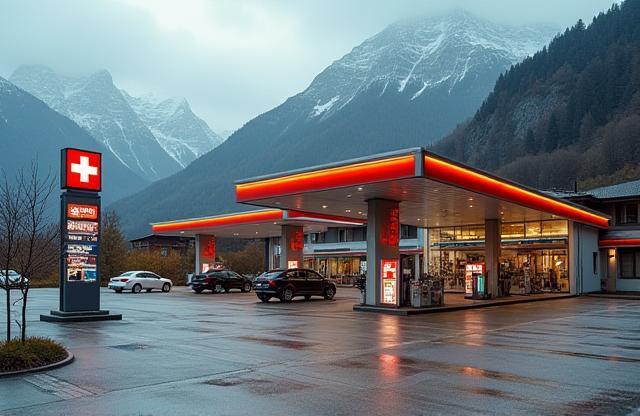Essential Travel Tips for Driving in Switzerland
Enhance your Swiss driving experience with these helpful tips on routes, rules, and regulations.
Best Travel Routes and Alternative Roads
Swiss motorways (Autobahnen or Autoroutes, marked with 'A' followed by a number) are the fastest way to travel long distances across Switzerland, connecting major cities and regions efficiently. However, Switzerland also offers scenic alternative routes (Hauptstrassen or Routes principales, marked with 'B' followed by a number, or simply with route numbers) that are toll-free and pass through picturesque villages, alongside lakes, and over mountain passes, offering stunning views and a more immersive Swiss experience. While B-roads may be slower due to lower speed limits and winding paths, they provide a more rewarding journey for those who are not in a rush and wish to explore the Swiss countryside. Plan your route based on your priorities – speed or scenery. Navigation apps such as Google Maps, Apple Maps, or dedicated Swiss navigation apps (like Swiss Map Mobile) can help you choose between motorway and alternative routes, often providing options for scenic drives. Consider combining both types of roads for a balanced travel experience, using motorways for long stretches and B-roads for local exploration.
Important Traffic Rules and Regulations
- Speed Limits: General speed limits are strictly enforced in Switzerland. They are 120 km/h on motorways, 80 km/h on main roads outside towns, and 50 km/h within towns. Be aware of speed cameras, both fixed and mobile, which are prevalent. Speeding fines in Switzerland are very high and are issued promptly. Always pay attention to road signs as speed limits can change frequently, especially in and around built-up areas and construction zones.
- Winter Driving: Winter tires with the Alpine symbol (3-peak mountain snowflake) are mandatory in winter conditions (typically from November to April, but depends on weather). If your vehicle is not equipped with winter tires and you cause an obstruction or accident in winter conditions, you could face fines and liability issues. Snow chains may be required in certain areas, especially in mountain regions, indicated by specific road signs. It's advisable to carry snow chains if you are driving in mountainous areas during winter, and know how to install them.
- Headlights: Dipped headlights are mandatory at all times while driving in Switzerland, even during daylight hours and in tunnels. This rule applies to all vehicles, including motorcycles and scooters. Failure to use headlights can result in fines.
- Priority to Public Transport: Be mindful of trams and buses, which often have priority, especially in urban areas. Give way to public transport vehicles pulling away from stops. In some cities, trams may run in the middle of the road, so be cautious when driving alongside tram lines.
- Emergency Services: In case of emergencies, dial 112 for general emergencies (works across Europe), 117 for police, and 144 for ambulance. It is legally required to carry a warning triangle in your vehicle and a first-aid kit is also highly recommended. In case of a breakdown or accident on a motorway, use the emergency lane, put on your hazard lights, and place the warning triangle at a safe distance behind your vehicle (typically 100 meters on motorways).
Cross-Border Travel and Toll Systems
If you are traveling to or from neighboring countries (Germany, France, Italy, Austria, Liechtenstein), be aware of their toll systems and regulations, as they differ from Switzerland. For example, Austria also uses a vignette system (Autobahnvignette), which is mandatory on Austrian motorways and expressways. Germany does not have general tolls for cars but has tolls for trucks (LKW-Maut) and environmental zones in many cities requiring an Umweltplakette (environmental sticker). France and Italy primarily use toll booths (Péage or Pedaggio) on their autoroutes and autostrade, where you pay based on distance traveled. Ensure you have the necessary vignettes or payment methods for each country you plan to drive through. Plan your route carefully, especially if crossing multiple borders, and purchase vignettes or prepare for toll payments in advance to avoid delays and fines when crossing borders or entering toll roads. Websites like ASFINAG (for Austria), ADAC (for Germany), and websites of French and Italian motorway operators provide detailed information on tolls and regulations in these countries.













